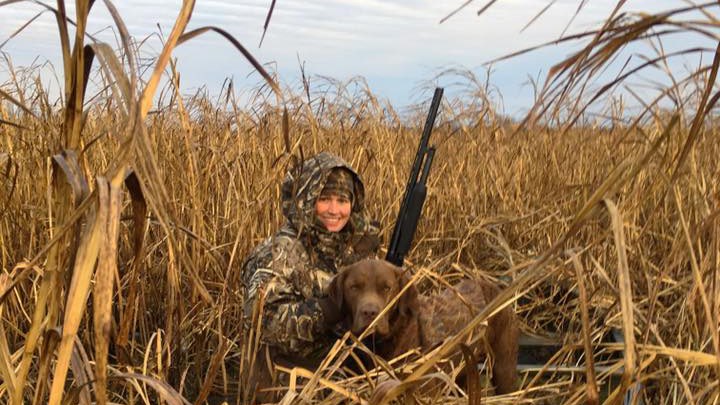
by Brian McCombie - Saturday, June 8, 2019

On June 6, in a proposal supported and encouraged by the National Rifle Association, U.S. Secretary of The Interior (DOI) David Bernhardt announced a plan for new or expanded hunting and fishing opportunities at 74 national wildlife refuges and 15 national fish hatcheries managed by the U.S. Fish and Wildlife Service (USFWS). In all, more than 1.4 million acres would be opened for these new hunting and angling opportunities.
“President Trump is committed to expanding public access on public lands, and this proposal is executing on that directive by opening and increasing access to hunting and fishing by the Fish and Wildlife Service at more stations and across more acres than ever before,” said Secretary Bernhardt at a press conference held at the Ottawa National Wildlife Refuge near Port Clinton, Ohio.
Bernhardt continued, “Hunting and fishing are more than just traditional pastimes as they are also vital to the conservation of our lands and waters, our outdoor recreation economy and our American way of life. These refuges and hatcheries provide incredible opportunities for sportsmen and women and their families across the country to pass on a fishing and hunting heritage to future generations and connect with wildlife.”
The proposal would increase the number of units in the USFWS’ National Wildlife Refuge System (NWRS) where the public may hunt from 377 to 382, and the number where fishing would be permitted from 312 to 316. The proposal also formally would correct to have the open lands on 15 hatcheries of the National Fish Hatchery System to hunting or sport fishing for the first time.
"We have a duty to conserve our public lands and ensure they are open and easily accessible for the recreation and enjoyment of all Americans,” said NRA Institute for Legislative Action (NRA-ILA) Executive Director Chris Cox. “Opening more than 1.4 million acres to hunting and fishing will help preserve America's outdoor heritage for generations to come. On behalf of the five million members of the NRA and tens of millions of American sportsmen and women, we thank Secretary Bernhardt for returning public lands back to the public."
The NRA was joined by many other hunter-backed conservation organizations in applauding the proposal that fosters the progress in increasing access for sportsmen to refuge lands over the past two years. “Duck hunters have been leaders in investing in the refuge system and this action will provide them with new access and opportunities,” said Delta Waterfowl Senior Vice President John Devney. We are sincerely grateful to Secretary Bernhardt and the Fish and Wildlife Service staff who have worked hard to create these new opportunities for hunters.” Revenue from the sale of Duck Stamps to hunters, by the way, is directed 100 percent to land acquisition for the NWRS.
New proposed opportunities include the opening of Green Bay National Wildlife Refuge in Wisconsin to hunting and fishing for the first time, and the opening of Seedskadee National Wildlife Refuge in Wyoming to deer and elk hunting for the first time on lands already open to other hunting.
Proposed expansions of refuge opportunities include: opening new acres at St. Marks National Wildlife Refuge in Florida to existing upland and big game hunting; and, at Great River National Wildlife Refuge in Illinois and Missouri, expanding season dates, times and methods for existing deer, turkey and other upland game hunting to align with state seasons.
“Well managed hunting and fishing are the backbone of conservation in this country, but inconsistent or overly complex regulations can act as a disincentive,” Service Principal Deputy Director Margaret Everson explained. “By aligning our refuge regulations with our state partners, we are reducing confusion and the regulatory burden on the American public, helping ensure the tradition and benefits of hunting and fishing can continue.”
As the NRA Hunters’ Leadership Forum website and NRA-ILA have reported, Bernhardt is very committed to wildlife conservation. When he was acting-secretary of Interior, “Bernhardt celebrated the successful recovery of the gray wolf and began the delisting process so that the Endangered Species Act could be utilized as intended, not to keep a species listed indefinitely, but to manage it once its population reached a healthy level. He also released funding for numerous state grants to improve migration routes and habitat ranges for Western big game species in the ongoing effort of the department to work more in concert with states and volunteer private landowners.”
As food for thought, the protection of hunting and fishing on wildlife refuges was secured with passage of the NWRS Improvement Act, which named hunting, fishing and four other wildlife-dependent recreational activities as priority public uses. That language can be attributed directly to the NRA, specifically NRA-ILA’s Department of Conservation, Wildlife and Natural Resources, and the Sportsmen’s Alliance.
Now, the USFWS will seek comments from the public on the proposed rule for 45 days, beginning with publication in the Federal Register. Those who want to share their views can go to Regulations.gov, Docket Number: FWS-HQ-NWRS-2019-0040, for instructions on how hunters and conservationists can submit comments. The USFWS intends to finalize the proposed changes in time for the upcoming 2019-2020 hunting seasons.
About the Author:
Brian McCombie is a field editor and editorial contributor for the NRA's American Hunter. He writes about firearms and gear for the NRA's Shooting Illustrated website, as well handling public relations and marketing for companies and manufacturers in the shooting sports industry. He is a member of the National Rifle Association and the National Shooting Sports Foundation. Brian likes hunting hogs, shooting 1911s chambered in 10 mm and .45 ACP, watching the Chicago Bears and relaxing with Squinchy, the orange tabby cat.
Follow NRA Hunters' Leadership Forum on Twitter @HuntersLead.
E-mail your comments/questions about this site to:
[email protected]
